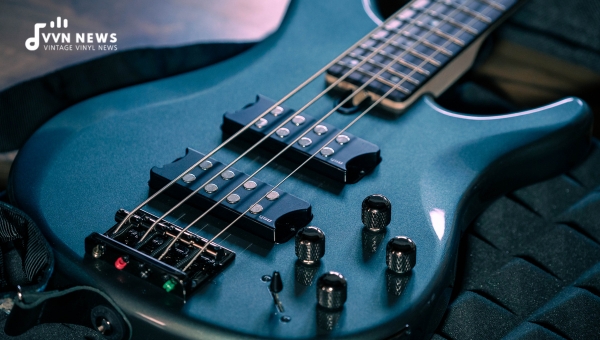As an avid guitar player, I know how thrilling it is to play your favorite song on the strings. But the journey to get there isn’t without its share of pain.
If you’re a beginner or have just started learning, you might have felt a certain discomfort at your fingertips. The solution is building guitar calluses. So, the question becomes, how to build guitar calluses?
Let’s dive into this topic and work on turning your tender tips into sturdy rock star fingers!
Here I will present some tried-and-true practices that will lead you to fret mastery without the pain.
Building guitar calluses is not only crucial for playing in comfort but also for dexterity and overall performance improvement while jamming those strings.
What Are Guitar Calluses?
Guitar calluses are hardened skin that forms on your fingertips due to repeated pressure and friction as you play the guitar.
When you’re just starting, your fingertips might not be accustomed to the rough touch of the strings. This could cause your fingers to hurt and may even lead to blistering.
Calluses offer a solution by creating a natural protective layer over your fingertip skin.
They’re your body’s defensive mechanism to safeguard against consistent pressure or rubbing that could harm the skin.
Once formed, these calluses reduce pain and ease playing, allowing you to hold down strings more effectively for crisp notes.
While calluses could seem intimidating or unpleasant initially, remember they are a guitarist’s badge of honor.
They signify hours of practice and dedication to mastering this beautiful instrument. And once formed, they make guitar playing immensely more enjoyable and smooth.
Why Build Guitar Calluses?

Building guitar calluses is not about enduring pain; it’s about evolving your fingers to play the instrument more smoothly and comfortably.
These hardened layers of skin on your fingertips:
- Reduce discomfort and pain: Continuous touch of the strings against your skin will inevitably cause some level of pain initially. The formation of calluses provides a protective layer that minimizes this.
- Improve grip on strings: With a layer of hardened skin, it becomes easier to hold down and slide along the strings, enhancing playing precision.
- Increase endurance: Developed calluses enable longer sessions without discomfort, allowing for more practice time and improved performance.
In essence, guitar calluses are the body’s adaptation for better guitar playing. So don’t fret (pun intended); these toughened tips are your entry ticket into the world of proficient guitar mastery!
How to Build Guitar Calluses?
Building guitar calluses might feel tedious, but with a mindful approach, patience, and some smart techniques, callus development can be accelerated. Listening to your body is crucial throughout this journey.
Consistent Practice is Key
Just like with any other skill, consistent practice is the key to building guitar calluses. Dedicate time each day for your guitar sessions.
Playing daily will provide constant pressure on your fingertips which aids in developing the required tough skin.
It’s important to find a balance in your practice sessions. Fretting until your fingers bleed might sound metal, but it’s not beneficial for building calluses or for efficient learning.
Start by playing for 15-20 minutes each day and gradually increase this over time as your fingers adjust.
Engage in Enjoyable Guitar Sessions
While we’re talking about practice, remember enjoying what you’re doing tremendously helps the process along! Yes, even while developing those painful calluses.
If you love the music you’re playing or if you are thrilled by the notes produced during your session, somehow, that fingertip pain becomes less noticeable. Enjoyment has a profound effect on how we perceive pain.
Try learning songs that have varying chord progressions or multiple fretboard positions to make sure all fingers get an equal share of string action.
This experience will not only amplify your skill level but also help in speeding up the callus formation on all fingers simultaneously.
Swap the Electric for the Acoustic Guitar Occasionally
If you’re primarily an electric guitar player and are finding it hard to develop calluses quickly enough, it’s worth picking up an acoustic guitar occasionally during practice sessions.
The strings of an acoustic guitar tend to be rougher than those of an electric one because they need more tension to produce sound.
What does this mean for developing calluses? Well, more tension equals more friction which ultimately means quicker formation of hardened skin on fingertips.
Also Read: How To Upgrade Your Flute? [A Comprehensive Buying Guide]
Maintaining and Looking after Your Calluses

Building guitar calluses takes effort and dedication. Once you’ve accomplished it, it’s essential to care for them properly to continue enjoying a pain-free jam session.
Let’s discuss some best practices for maintaining these prized traits of a guitarist.
Avoid Tearing, Chewing, or Picking at Calluses
Picking at, tearing, or biting your calluses is simply a no-go! This behavior could lead to painful wounds and potential infection.
Without vigilant care, that could result in longer disruptions in practice and therefore slow down your progress on the instrument.
These patches of thickened skin are there for a purpose – protecting your fingers from the pain of pushing against the strings.
Occasionally, calluses may peel off naturally as new skin develops beneath. This is a common body response and not a cause for concern unless coupled with signs of infection like redness or pus.
Even then, avoid pulling off flaking skin yourself. Let it shed naturally as you wash your hands or during normal daily activities.
Playing with Moist Hands
Playing the guitar with moist hands accelerates the softening of your calluses which could lead them to tear or peel off prematurely.
It’s always recommended that you completely dry your fingers before picking up your guitar to keep those hardened tips intact.
Constantly soaked fingers could also become pruney and more susceptible to blistering under pressure.
If possible, avoid playing after taking hot showers as well because the hot water softens both the nails and fingertips which can hamper playing quality.
Also Read: 15 Best Tremolo Pedals [Add Vibrato To Your Guitar Sound]
Avoid Excessive Pressure While Strumming
While learning to play guitar effectively takes time, patience is key! Apply constant but balanced pressure on the frets – overdoing it doesn’t only fast-track finger pain but also risks wearing down your callus too soon.
Excessive force while strumming leads to unnecessary friction that can wear away at developed calluses faster than they can reform even possibly tearing open tender skin underneath prematurely exposed calluses.
A balanced approach towards practicing will be beneficial not just for preserving your hard-earned fingertip guards but also for improving overall sound quality – letting the instrument ring out clear notes without unintentional muffling from overly pushed strings.
Duration for Developing Calluses
It’s important to understand that everyone’s body responds differently, so there’s no definitive timeframe for developing guitar calluses.
With regular and diligent practice, most people notice a hardening of the skin on their fingertips within 2 to 4 weeks.
This naturally varies depending on factors like frequency, duration of play, and individual skin types.
The key here is patience and persistence. So concentrate more on enjoying your learning journey rather than just focusing on building these calluses.
Techniques to Accelerate the Formation of Calluses

While it’s true that there’s no real shortcut to forming guitar calluses, there are techniques that can expedite the process.
These methods aim to toughen your fingertips without making them sore or causing blisters.
Daily Practice
This is the most natural and beneficial method. Regular guitar sessions expose your fingers to continuous friction with guitar strings, triggering callus formation.
String Bends and Slides
You can intentionally add more string bends and slides into your practice routine. In a controlled manner, this movement across the strings can hasten callus formation.
Use Higher Gauge Strings
Higher gauge strings apply more pressure on your fingertips. Switching to these temporarily could expedite the process.
Finger Tapping
Keep tapping your fingers on hard surfaces throughout the day when you’re not playing your guitar, which also aids in hardening the skin faster.
Soak and Sand
Soaking your fingertips in rubbing alcohol for about half a minute each day can help. This dries out your skin and accelerates the callus formation process. Afterward, gently sanding with an emery board can further harden the skin.
It’s important to always avoid techniques that could harm your skin or result in an infection, such as using a sharp object or heat source.
Also, excessive pressure while playing does more harm than good; it may lead to blisters which delay the callus formation process.
Patience and dedication are crucial for successfully building guitar calluses. With consistent practice following these techniques, you will develop a great set of protective guitar calluses in due time.
Also Read: 20 Best Classical Guitars [Top Picks For A Beautiful Sound]
FAQs About Guitar Calluses
How long does it take to develop guitar calluses?
Generally, with consistent and regular practice, guitar calluses start forming in about 2-3 weeks.
Is there any way to fasten the callus development process?
Yes, you can try soaking your fingertips in apple cider vinegar or rubbing alcohol. They toughen skin faster.
Is playing the guitar with moist hands bad for the calluses?
Yes, playing with moist hands softens the skin making it prone to tearing. It’s best to play with dry hands.
Can I use any hand lotion or cream while developing calluses?
Though it may soothe your hand temporarily, lotions soften skin and slow down the development of callus. It’s recommended not to use it before practice.
What should I do if my fingertips hurt excessively while developing calluses?
You can apply an over-the-counter topical numbing cream before you start playing. Holding ice against your fingertips for a couple of minutes also helps.
Conclusion
Developing guitar calluses is a rite of passage that every guitarist must experience. Although it may seem uncomfortable at first, the benefits far outweigh the initial discomfort.
Practice consistently, avoid excessive pressure while playing, and don’t play with wet hands – simple habits like these go a long way in building and maintaining your guitar calluses.
Speed is not key here, patience is! With dedicated practice and proper care, you’ll eventually develop firm calluses that make your guitar-playing journey an enjoyable one.
Once you have those in place, the soothing melodies and ardent riffs are only fingertips away!








